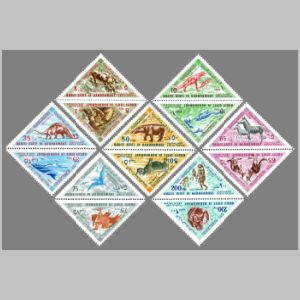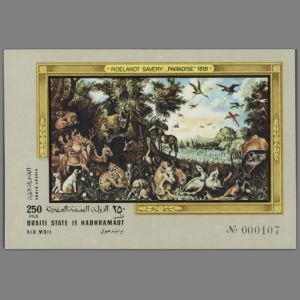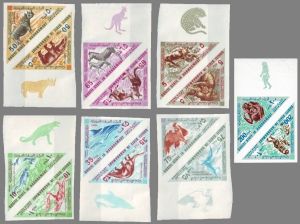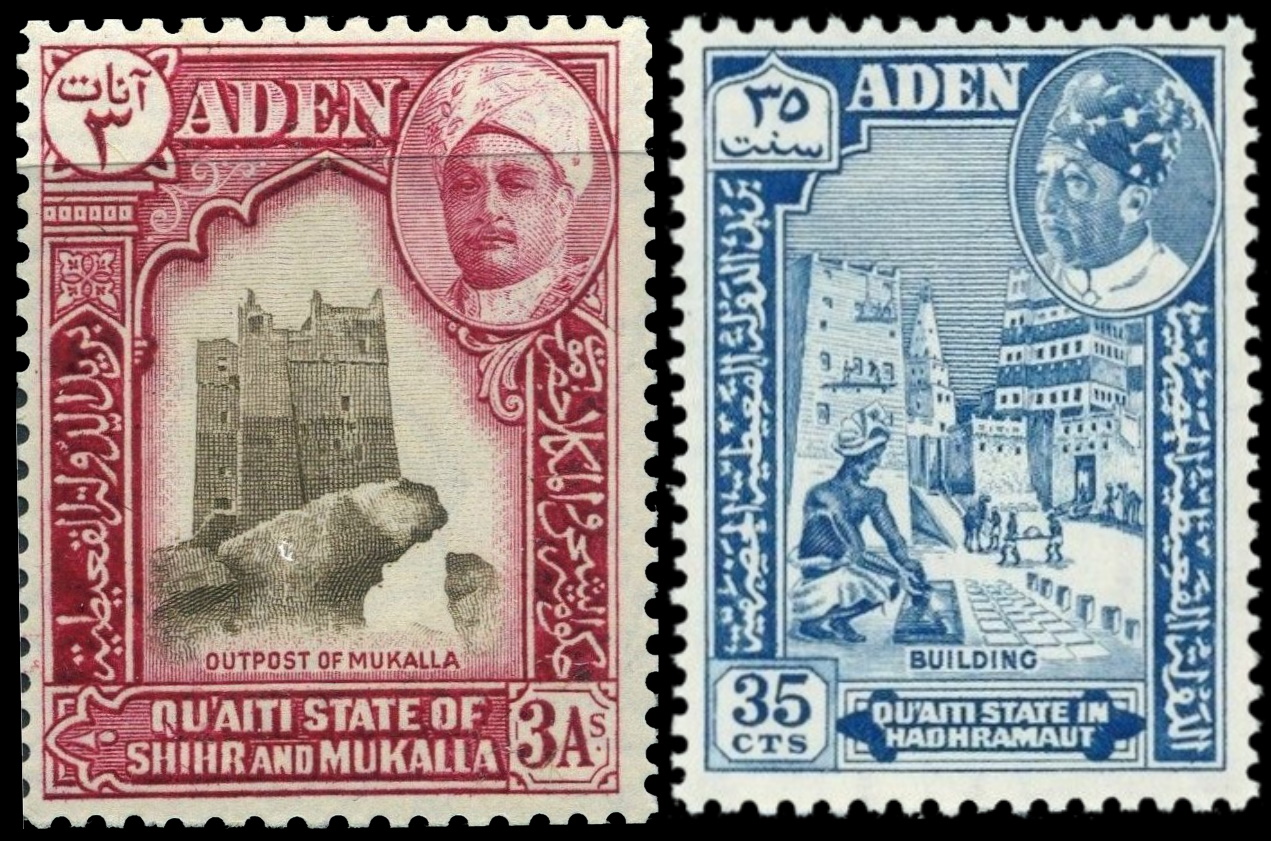the place where Paleontology and Paleoanthropology meets Philately
Qu'aiti State in Hadhramaut
Dinosaurs and others prehistoric animals on stamps of Qu'aiti State in Hadhramaut
| << previous country | back to index | next country >> |
Contents:
- Country overview
- Philately of Qu'aiti State in Hadhramaut
- Official stamps of Qu'aiti State in Hadhramaut related to Paleontology
- References
- Acknowledgements
Qu'aiti, officially the Qu'aiti State in Hadhramaut or the Qu’aiti Sultanate of Shihr and Mukalla, was a sultanate in the Hadhramaut region of the southern Arabian Peninsula, existed between 1858 and 17 September 1967, in what is now Yemen.
Covering approximately 70,000 square miles, roughly the size of England and Wales, Qu’aiti was the third largest kingdom in Arabia after the Kingdom of Saudi Arabia and the Sultanate of Oman.
Its capital was Al Mukalla and it was divided into six provinces including Al Mukalla, Ash Shihr, Shibam, Du'an, the Western Province and Haj.
As Great Britain planned for the eventual independence of South Arabia in the 1960s, Qu’aiti declined to join the British-sponsored Federation of South Arabia but remained under British protection as part of the Protectorate of South Arabia.
South Yemen united with North Yemen in 1990, again without a referendum, to become the Republic of Yemen. [R1]
The first stamps of the Sultanate were issued in 1942 under name "ADEN: Qu'aiti state of shihr and mukalla".
Since 1955 stamps of the Sultanate were named "ADEN: Qu’aiti State in Hadramaut" and since 1963 just "Qu’aiti State in Hadramaut".
When ADEN was written on the top and the Sultanate name on the bottom side of the stamps.
In the first years the Sultanate were issued a new stamp set with up to 10 stamps every 4-5 years. These stamps showed a portrait of the Sultan on the top-right corner and some landscape of the Sultanate in the rest of the area.
The situation changed in 1966, when Qu’aiti State in Hadramaut started to issue thematic stamp sets that were thematically not related to the country.
Even after Qu’aiti State was integrated in South Yemen in 1967, stamps continued to be printed. The last stamp of the Qu'aiti State in Hadhramaut was printed in 1968.
The postal purpose of these stamps (1968) is doubtful. Most likely, they were produced abroad for stamp collectors and never used on correspondence inside of the country. [R2]
Official stamps of Qu'aiti State in Hadhramaut related to Paleontology: dinosaurs and other prehistoric animals
| xx.1968 "Recent and Prehistoric animals" [1] | ||
 |
 |
|

|
| Dinosaurs, prehistoric and modern animals on imperforated stamps of Qu'aiti State in Hadhramaut 1968. MiNr.: 177B-190B (perforated stamps 177A-190A), Scott: N/A |
Notes:
[1] "Recent and Prehistoric animals": stamps with the same face value were printed se-tenant (tete-beche).
Design of all prehistoric stamps are after famous paintings by the Czechoslovakian paleo-artist Zdenêk Burian.
This set of se-tenant stamps exist in both perforated and imperforated variations.
Margins of the stamps sheets have some additional color illustration of the same animals.
According to MICHEL catalog this high face value Souvenir Block (Bl. 22, stamp 191), for the airmail post, with the painting of modern animals, "Paradise" by Roelandt Savery from 1618, belongs to the same stamps set.
Distinguished from MICHEL and Yvert et Tellier, Scott and Stanley Gibbons catalogs doesn't list this stamps set.
References:
- [R1] Qu'aiti: Wikipedia.
- [R2] Postal History and Philately of Qu'aiti: Wikipedia, www.stampworldhistory.com (this website not exist anymore), The Collectors’ Shop.
Acknowledgements:
Many thanks to Dr. Peter Voice from Department of Geological and Environmental Sciences, Western Michigan University, for reviewing the draft page and his very valuable comments.
| << previous country | back to index | next country >> |
